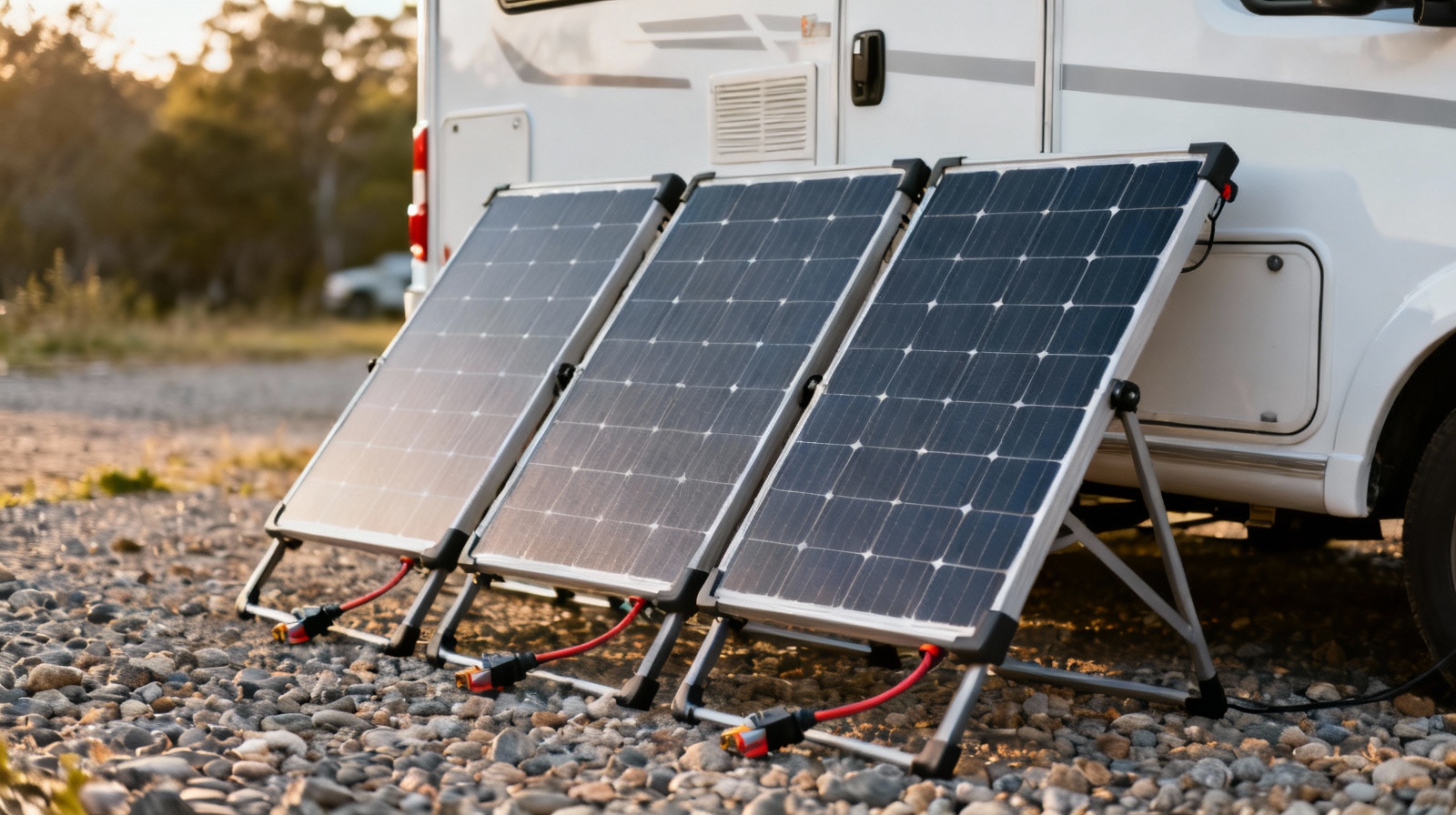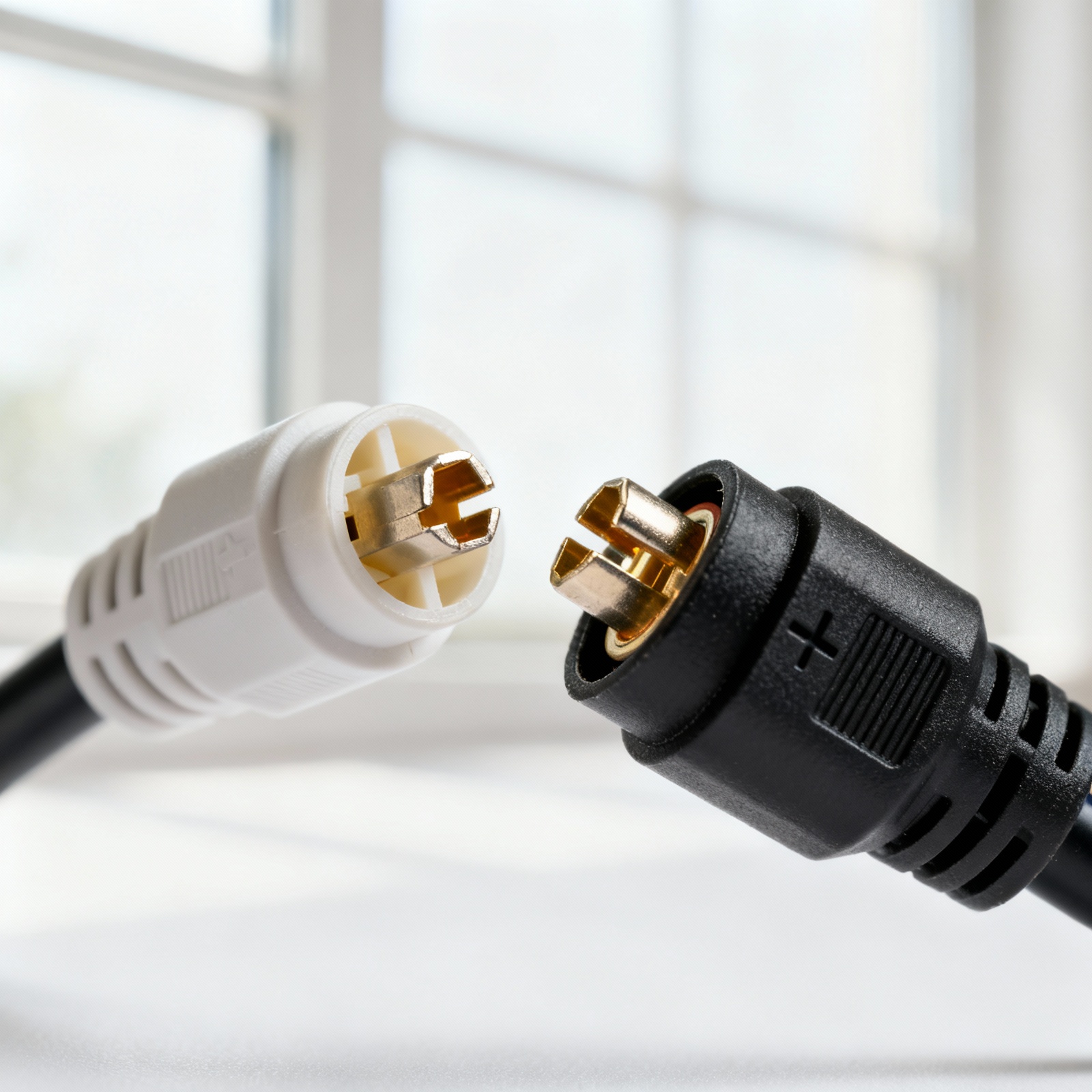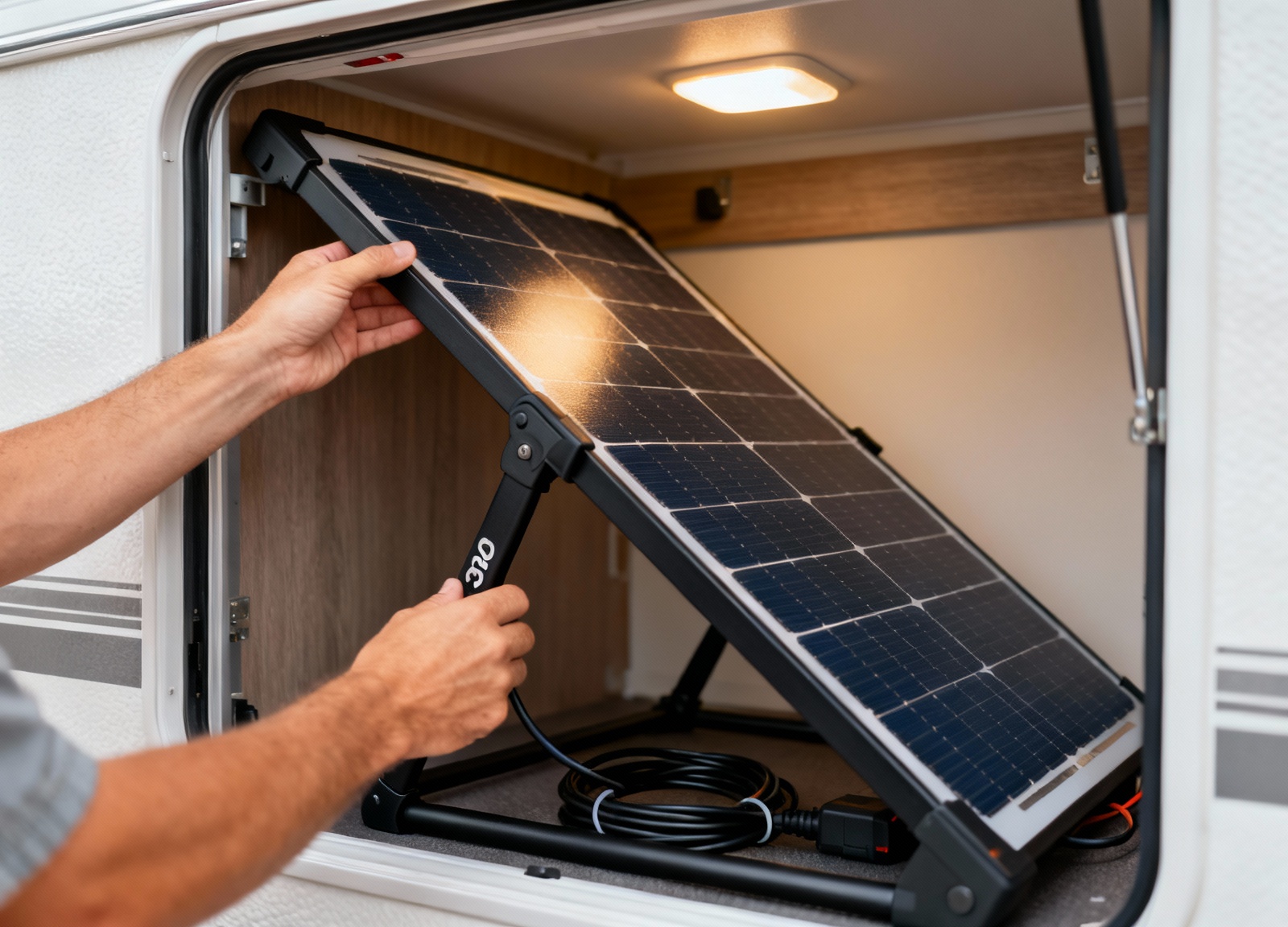
Best by Use-Case
Boondocking Power Station
For serious off-grid camping lasting 5+ days, the Renogy 400W monocrystalline kit delivers consistent power generation even in partial shade conditions. This setup pairs perfectly with dual 100Ah lithium batteries, providing enough capacity to run a 12V compressor fridge, LED lighting, water pump, and device charging for extended periods. The included 40A MPPT controller maximizes harvest efficiency, pulling 20-25% more power than PWM controllers in real-world conditions.
- Pros: Excellent low-light performance with 21% cell efficiency, expandable to 800W total, includes mounting hardware and branch connectors
- Cons: Requires permanent roof mounting for optimal use, initial investment exceeds $1,200 with batteries
Alternative pick: Goal Zero Boulder 200 briefcase panels offer tool-free setup and weatherproof construction ideal for ground deployment. The integrated kickstand adjusts to multiple angles throughout the day, maximizing solar harvest without permanent installation.
Budget Weekender
The Renogy 100W portable suitcase kit hits the sweet spot for occasional weekend trips. At under $300, this foldable setup charges phones, tablets, portable fans, and LED lights while keeping a single 100Ah battery topped off.
The built-in PWM controller and alligator clips mean zero installation required—simply unfold, connect to your battery, and start harvesting solar energy within minutes. While not suitable for high-draw appliances, it handles basic camping needs reliably.
- Pros: Complete plug-and-play system under 27 pounds, protective case doubles as stand, 25-year power output warranty
- Cons: PWM controller less efficient than MPPT, limited to 100W expansion, insufficient for residential fridges or air conditioning
Winter Camper
Cold-weather RVing demands specialized equipment, making the Victron SmartSolar MPPT controller essential for maintaining battery health below freezing. This intelligent controller features temperature compensation and programmable charging profiles that prevent lithium batteries from charging below 32°F—a critical safety feature often overlooked. Pair it with 300W+ of tilting panels to compensate for low winter sun angles, which can reduce output by 40-60% compared to summer.
- Pros: Bluetooth monitoring shows real-time performance data, automatic battery temperature protection, works with all battery chemistries
- Cons: Controller alone costs $150-350 depending on amperage, requires separate panel purchase, complex initial programming
Consider adding a Battle Born heated lithium battery for true four-season capability. The internal heating element activates automatically below 35°F, ensuring consistent performance when other batteries fail.
Lightweight Setup
Van lifers and small trailer owners benefit from flexible solar panels that conform to curved roofs while adding minimal weight.
The BougeRV 100W CIGS thin-film panels weigh just 4.6 pounds each—70% lighter than traditional glass panels—yet withstand walking loads and hailstorms. Their peel-and-stick backing eliminates drilling, preserving roof warranties and preventing leaks. Maximum thickness of 0.08 inches means virtually no wind resistance or height clearance issues.
- Pros: Bendable up to 30 degrees for irregular surfaces, shade-tolerant technology maintains output with partial coverage, 5-year warranty
- Cons: Lower efficiency (16%) requires more roof space per watt, adhesive installation is permanent, costs 20-30% more than rigid panels
Full-Time RV Living
Residential-style power demands require serious solar infrastructure. The Rich Solar 400W monocrystalline panels maximize power density with 22.8% efficiency cells, allowing 800-1200W systems on typical RV roofs. These commercial-grade panels feature reinforced aluminum frames, junction boxes rated IP68 waterproof, and bypass diodes that maintain output even when partially shaded.
Full-timers typically need 600W minimum to run residential fridges, air conditioning (with soft-start), and standard household electronics. The investment pays off through energy independence and eliminated generator runtime.
- Pros: Industry-leading efficiency reduces required roof space, 12-year product warranty with 25-year performance guarantee, compatible with all mounting systems
- Cons: Each panel weighs 48 pounds requiring reinforced mounting, professional installation recommended, $400+ per panel
Quick Comparison

| Model | Type | Key Specs | Best for |
|---|---|---|---|
| Renogy 400W Kit | Rigid Mono | 4x100W panels, 40A MPPT, 21% efficiency | Extended boondocking |
| Renogy 100W Suitcase | Portable Mono | Foldable, PWM controller, 27 lbs | Weekend camping |
| BougeRV CIGS Flexible | Thin-film | 100W, 4.6 lbs, bendable 30° | Curved roofs, vans |
| Rich Solar 400W | Rigid Mono | Single panel, 22.8% efficiency, 48 lbs | Full-time RVing |
| Goal Zero Boulder 200 | Portable Mono | Briefcase style, 42 lbs, tempered glass | Ground deployment |
Buyer’s Notes
Understanding your actual power consumption forms the foundation of proper solar sizing. Most RVers drastically underestimate their needs, leading to disappointing performance and premature battery failure.
Start by calculating amp-hours consumed daily: multiply each device’s wattage by hours used, divide by 12V, then add 25% for inverter inefficiency. A typical couple uses 75-100Ah daily for basic needs (lights, water pump, phones, laptop), while running a residential fridge adds another 40-60Ah. Heavy users with multiple appliances can easily exceed 200Ah daily.
Panel wattage ratings reflect laboratory conditions rarely achieved in practice. Real-world output typically reaches 75-80% of rated capacity due to temperature losses, wiring resistance, and sun angle. The “33% rule” suggests installing three times your daily consumption in panel wattage—a 100Ah daily load needs 300W of panels minimum. This accounts for cloudy days, seasonal variations, and aging degradation while maintaining battery health through proper charging cycles.
Controller selection impacts system efficiency more than most realize.
PWM controllers work adequately for small systems under 200W but waste significant power as voltage differences increase. MPPT controllers cost 3-4 times more but harvest 20-30% additional power, especially in cold weather or with mismatched panel/battery voltages. They also handle series panel connections, reducing wire gauge requirements for long cable runs. For systems over 400W, MPPT becomes essential for maximizing harvest.
Battery chemistry determines your entire system design. Flooded lead-acid batteries cost least upfront but require ventilation, regular maintenance, and gentle charging to prevent sulfation. AGM batteries eliminate maintenance and work in any orientation but still suffer from limited depth-of-discharge (50% maximum) and slow charging rates.
Lithium (LiFePO4) batteries revolutionize RV solar despite costing 3-4 times more initially—they accept faster charging, discharge to 80-90% without damage, last 3,000+ cycles, and weigh 60% less. Most importantly, you can actually use their full rated capacity unlike lead-acid technologies. The higher upfront cost pays for itself through longer lifespan and usable capacity.
Safety Considerations

Electrical fires remain the leading cause of RV total losses, making proper installation non-negotiable.
Every connection point requires appropriate gauge wiring—undersized cables create resistance that generates dangerous heat. Use the voltage drop calculator for your specific run length, accepting maximum 3% loss. Install properly rated fuses or breakers within 18 inches of battery terminals and at the controller input. Marine-grade components resist corrosion better than automotive equivalents in RV environments.
Lithium batteries demand particular respect regarding temperature limits. Charging below 32°F causes permanent damage through lithium plating, while temperatures above 140°F risk thermal runaway. Quality Battery Management Systems (BMS) prevent these scenarios, but cheaper batteries may lack adequate protection. Never mix old and new batteries, different chemistries, or even different brands in the same bank—voltage imbalances cause accelerated failure and potential safety hazards.
Roof work presents serious fall risks, especially on curved fiberglass surfaces that become extremely slippery when wet. Use proper safety equipment including non-slip shoes, safety harnesses on roofs over 8 feet high, and never work alone.
Drilling holes for mounting requires careful sealing with Dicor or similar RV-specific sealants—standard silicone fails within months under UV exposure. Inspect sealants annually and reapply before any cracking appears. Water intrusion from failed seals causes extensive structural damage costing thousands to repair.
Installation Tips

Proper panel mounting maximizes both performance and longevity. Allow at least 3 inches of air gap beneath rigid panels for cooling—panels lose 0.5% efficiency per degree above 77°F. Tilt mounts boost winter production by 25-40% but create wind resistance during travel. Most RVers find fixed flat mounting acceptable for three-season use.
Wire management prevents damage and simplifies troubleshooting. Use UV-resistant cable entry glands rather than simple holes with sealant. Run positive and negative wires separately to minimize electromagnetic interference. Label every connection point clearly—you’ll thank yourself during midnight troubleshooting sessions. Install disconnect switches at strategic points for safe maintenance.
Ground fault protection saves lives.
Bond all metal components to the RV chassis ground, including panel frames, mounting rails, and controller cases. Install a DC ground fault circuit interrupter (GFCI) between panels and controller. While adding $100-200 to system cost, this device prevents electrocution risks from damaged wiring or water intrusion.
Maintenance Schedule

Monthly tasks take minutes but prevent major failures. Check battery water levels (flooded only), clean panel surfaces with water and soft brush, verify all connections remain tight. Monitor voltage readings for abnormalities—sudden drops indicate developing problems.
Quarterly maintenance includes checking wire insulation for rodent damage, testing disconnect switches and breakers, cleaning battery terminals with baking soda solution. Inspect mounting hardware for loosening—vibration during travel gradually works fasteners loose. Verify controller settings haven’t reset to defaults after power interruptions.
Annual deep inspection prevents costly surprises. Remove panels to check mounting points and reseal any questionable areas. Load test batteries to verify capacity—lead-acid batteries losing 20% capacity need replacement. Update controller firmware if available. Document system performance trends to identify gradual degradation before complete failure occurs.
Recommended Gear
- Victron SmartSolar MPPT 100/30 — Bluetooth monitoring and temperature compensation for optimal charging — View on Amazon
- Renogy 100W Monocrystalline Panel — Best value rigid panel with 21% efficiency cells — View on Amazon
- Battle Born 100Ah LiFePO4 Battery — Premium lithium with integrated heating and 10-year warranty — View on Amazon
- AIMS 2000W Pure Sine Inverter — Clean power for sensitive electronics with built-in transfer switch — View on Amazon
- Victron BMV-712 Battery Monitor — Bluetooth shunt provides accurate state-of-charge readings — View on Amazon
FAQs
- Can a 200W panel run a 12V compressor fridge? A 200W panel generates roughly 50-60Ah daily under good conditions, while efficient 12V fridges consume 30-40Ah. Yes, it works with adequate battery storage, but 300W provides a comfortable margin for cloudy days and prevents deep battery discharge.
- Why do flexible panels fail more often than rigid? The plastic backing expands/contracts differently than the silicon cells, causing micro-cracks over time. Heat buildup without air gaps accelerates degradation—flexible panels typically last 5-10 years versus 25+ for quality rigid panels. Consider them for weight-critical applications only.
- Should I wire panels in series or parallel? Series connections (24V, 36V) work better with MPPT controllers and allow smaller wire gauges for long runs. Parallel keeps voltage at 12V but requires larger wires and suffers more from partial shading. Most RV systems benefit from series-parallel combinations for redundancy.
- What causes solar panels to suddenly stop working? Check connections first—corrosion and loose terminals cause 80% of failures. Blown bypass diodes (from reverse polarity or lightning) create dead sections within panels. Physical damage like micro-cracks from hail or thermal stress gradually reduces output before complete failure. Controllers may also enter fault mode from overheating or voltage spikes.
